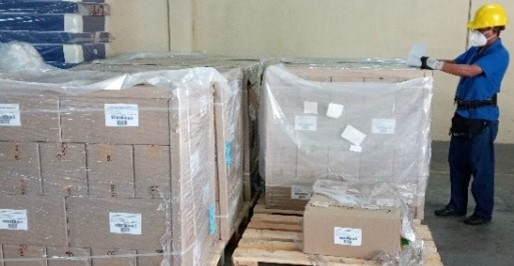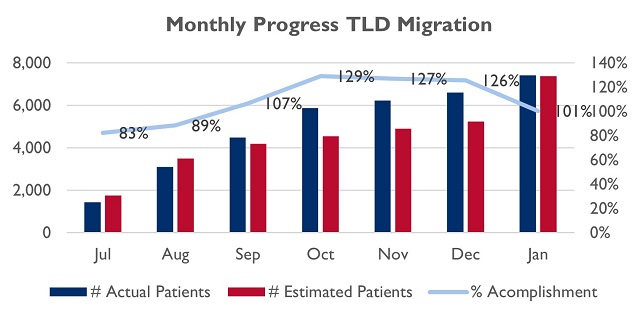In April 2020, GHSC-PSM worked with the STI/HIV Program Unit of MOH to brainstorm possible purchasing and inventory scenarios that could still occur despite COVID-19. Following a comprehensive risk review, which accounted for inventory and health workers and patients' acceptance of the new treatment conditions, GHSC-PSM and the STI/HIV Program Unit were able to establish three critical actions:
- Guide health facilities to start migrating to TLD once the inventory of available ARVs is exhausted.
- Adjust purchase requests to the Pan American Health Organization strategic fund according to the new July 2020 delivery plan to avoid overstock or expired inventory.
- Advance the receipt dates for TLD by combining them into one shipment that arrived in September 2020, enough to treat 9,000 people living with HIV.
With the MOH facing difficult working conditions due to COVID-19, such as reduced warehouse staff and constraints on pharmacies, budgets and transportation, each of these three actions required close monitoring and risk management, which GHSC-PSM supported through remote follow-up. The project monitored inventory coverage for each health facility and the TLD transition progress, oversaw adjustments of the purchasing plan with the STI/HIV Program Unit of MOH and coordinated the logistics around on-time delivery of TLD.

 As a result of these efforts at least 85 percent of patients in the national cohort will be candidates for TLD by the end of 2021.
As a result of these efforts at least 85 percent of patients in the national cohort will be candidates for TLD by the end of 2021.

